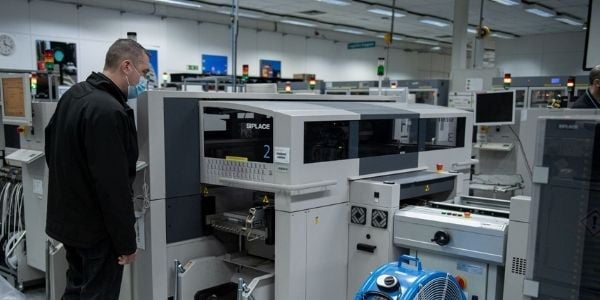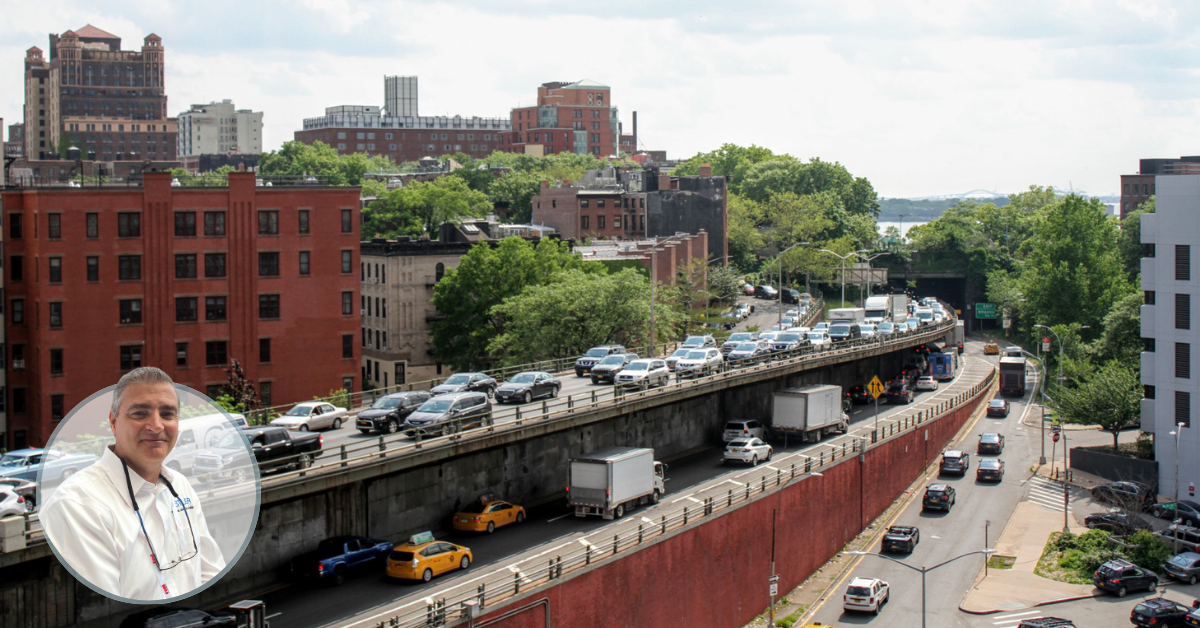According to ENISA (European Union Agency for Cybersecurity), smart Infrastructure comprises “several operators from different domains of activity, such as energy, public transport, public safety. They deploy and operate ‘cyber-physical systems’, that are data-controlled equipment which interact with the physical world.” Key to that description is the term “different domains”. We spoke to three players from different spheres of the smart infrastructure universe to ascertain how they have remained as innovative during the global pandemic as they were before it, and to find out just what working through one of the biggest world crises (if not the biggest) since the Second World War has meant for not just their company and its profit margins, but for their employees.
“We can be proud of the way our business and the wider industry has reacted and adapted to the many challenges of the Coronavirus pandemic,” says Matthew Vincent, Marketing Director at Siemens Mobility Ltd. “Modifying our work practices to make sure that our factory, site and field services teams were able to operate in a COVID-secure way, we continued to run all our operations, even in the height of the pandemic, with our teams working to keep the road network fully operational and the travelling public safe.”
The Covid-19 pandemic has illustrated that ‘interventions’, however undesirable, can work, as Vincent elucidates, with smart infrastructure elements at the core.
Improving air quality
“Once travel restrictions were imposed by governments worldwide there was a rapid and significant impact on air quality levels with air quality in our towns and cities quickly and quite dramatically improving. Conversely, as lockdown restrictions eased, air quality soon deteriorated and, in many cities, it soon returned to near pre-lockdown levels. The issue of air quality therefore remains high on network operators’ agendas and we have continued to work closely with authorities throughout this last year to deliver enforcement solutions that support their clean air goals.”
During 2020 and in to 2021 Siemens Mobility continued to drive forward a number of programmes, including Birmingham’s new Clean Air Zone and the expansion of London’s Ultra-Low Emission Zone, both of which remain on target to go live in 2021, despite the disruptions.
“Enforcement measures are proven to be effective in changing behaviour and in schemes such as these they make people think not only about the type of vehicle they drive, but also the travel choices they make. Ultimately this technology is helping drive lasting change and deliver health, economic and environmental improvements,” says Vincent.

To support the company’s clean air solutions, in the last 12 months Siemens Mobility have also entered into partnerships with EarthSense and HERE, leaders in the fields of air quality sensors and data respectively. By working with these key partners Vincent maintains that Siemens Mobility are providing customers with fully integrated air quality solutions. This allows them not only to constantly monitor their road networks in terms of traffic, but also to measure air quality in real time and to implement strategic interventions to manage it.
“To support the UK Government’s net-zero agenda, the roll out of our electric vehicle (EV) charging units has also continued unabated with over 400 of our rapid charging units having been supplied, installed and now maintained in cities across the UK, including work with our partner ESB EV Solutions in London and Coventry,” explains Vincent. “Over the next two years and again in partnership with ESB, we will be installing 197 EV chargers across Birmingham, as well as installing units for London’s first rapid charging hub in Woolwich.”
Smart traffic control systems are essential
Smart traffic control systems are an essential piece in the smart infrastructure jigsaw. Siemens Mobility launched the new Plus+ traffic control solution at the end of 2019 which meant that the system was installed under Covid-secure conditions in cities across the UK. Less complex than traditional control systems, the system can be largely pre-built in a controlled and secure environment off-site.
“Because less time is required on-street for the installation engineers, it makes it a safer working environment and less disruption to road users. Plus+ uses simple power and data cabling to cut overall installation and maintenance costs and by reducing cabling up to 75% the system also delivers efficiency and decarbonisation benefits,” Vincent adds.

This Smart Infrastructure theme continues in London where, in partnership with Transport for London, the first installation of Siemens Mobility’s all-new adaptive urban traffic control solution Sitraffic Fusion is now operational and controlling ‘living laboratory’ trial sites in the city. A key part of the development of London’s Real Time Optimiser system, Fusion will provide a completely new way of managing roads across the city, optimising signalised junctions and pedestrian crossings based on all road users’ needs. However, it's not just the technological evolution that has continued amid Covid-19 – employees’ personal evolutions have also been brought into sharper focus.
“The Coronavirus pandemic has forced us all to challenge, adapt and address not only where we work but more importantly how we work.”
“The Coronavirus pandemic has forced us all to challenge, adapt and address not only where we work but more importantly how we work,” Vincent says. “Technology has helped in many different ways, allowing us to stay connected with colleagues and customers, but it has also helped directly with the management and control of our road networks. Our cloud-hosted solutions mean systems can be accessed via a web browser from any location, a feature which has been invaluable during lockdowns as customers have been able to work remotely but operate just as effectively and efficiently, even when they’re miles apart.
“Whether it be enabling remote working, improving air quality, delivering improved control solutions, supporting electric vehicle growth or providing the uninterrupted service that our customers needed to manage and maintain their transport networks, our teams have worked tirelessly though the pandemic to not only support today’s needs, but also to develop smart systems for the future.”
Artificial Intelligence for cleaner, clearer and safer roads
For Jatish Patel, CEO of autonomous, scalable smart infrastructure software solution providers Flow Labs in Oakland, California, it has been a case of continued and deliberate innovation throughout the pandemic.
“Innovation is at the core of everything we do, and the pandemic has not slowed us,” says the British-born Patel. “During the last year, the transportation industry as a whole has been challenged by reduced funding and its inability to access physical sites, but our autonomous traffic signal timing solution is built on cloud-based artificial intelligence that lowers costs for agencies and works remotely. In many ways, the pandemic has met us where we already exist.”
Patel’s goal has been to provide cleaner, clearer and safer roads for everyone, a goal that has become even more important than it was a year ago.
“In the United States, the National Safety Council recently reported that more than 42,000 people died in traffic crashes in 2020, a 13-year high even though traffic volumes were down dramatically because of Covid-19. The pandemic has been a shock to the entire transportation system – a shock many agencies have been unable to fully absorb, but by automating key operational workflows, we enable them to react faster, at a fraction of the cost and with fewer interactions. As an example, it typically takes an agency three to five years to update timing plans manually, but with our solution, those same agencies can update plans at will.”
Want to know more about intelligent infrastructure and smart traffic control? Join Intertraffic ON AIR."
The first two episodes take place on the 20th of April.
Register now >
“In the United States more than 42,000 people died in traffic crashes in 2020.”
The Utah Department of Transportation (UDOT) is a prime example of an agency willing to look to the future now. With Flow Lab tools, UDOT has already been able to update their signal timings on five separate occasions since March 2020, helping them keep pace with ever-changing traffic patterns despite the dramatic change in global conditions
“For the last year, we've continued to innovate, and we’ve used this time to develop new algorithms for signal control as well as deeper analytics,” Patel continues. “We are looking at new applications for our technology and major problems we can address efficiently and cost-effectively using cloud-based software and Artificial Intelligence (AI). For example, during the pandemic, transit ridership understandably fell and people are walking and cycling more. This isn’t new, but it has been amplified by the crisis. We’re looking very directly at how AI can help cities maintain the delicate balance between vehicles, pedestrians and cyclists and how Flow Labs fits into that equation in a post-Covid world.”
Flow Labs are highly focused on traffic signal control, and helping transport agencies do it effectively and autonomously, but in the future Patel insists his company will be using the same technology architecture to help cities make even more decisions, such as where to build new roads, how to adjust transit schedules, dynamic speed limiting and how to route people more efficiently.
“We feel very fortunate that because we work with remote technology, our ability to innovate and our business trajectory remain sound. In the last year, we have increased the number of intersections we oversee, in part because our solution is completely cloud-based and reduces physical interaction in the field. We believe AI has shown tremendous benefits during the pandemic and will be embraced by even more agencies in the post-Covid world.
The last 12-months have been a test for the entire transportation eco-system but Patel is confident that Flow Labs’ solutions have risen to every challenge.
“We can’t predict what the next global emergency will be, but we do know AI will lessen the impact. We’re ready to work with transportation agencies, to build efficient traffic networks today that will also thrive in a global crisis tomorrow.”
Priority control for every heartbeat…
Mike Haldane, Vice President of Marketing at Global Traffic Technologies, sees things from a different perspective as his company’s focus, in the smart infrastructure world, is on fire, emergency management and law enforcement agencies.
“The value of priority control continues to be that vehicles can avoid traversing intersections when lights are red on their way to emergency incidents, allowing them to avoid up to 70 percent of intersection crashes, while reducing travel times by up to 25 percent,” Haldane says. “The survival rate of cardiac patients, for example, decreases 7-10 percent every minute, with little chance of survival after 8 minutes. For structure fires, a quicker response can mean less time for flashovers to occur, which is typically 7-8 minutes; and response time is a key criterion for Insurance Services Office ratings, which, when strong, can lead to lower insurance premiums for property owners within the city.”

“Priority control allows vehicles on their way to emergency incidents to avoid up to 70 percent of intersection crashes.”
Transit agencies can avoid delays of up to 40 percent, which can help buses, streetcars, or light rail trains can through their routes up to 20 percent faster, enabling efficiencies that can be used to expand transit coverage or eliminate operating costs.
“Improved service has also been proven to lead to higher levels of ridership, which reduces the number of vehicles on the road, thus helping lessen traffic congestion and carbon emissions,” Haldane suggests. “As electrification of vehicles (including transit buses) becomes pervasive, getting through the route efficiently means less chance of battery depletion before the bus can be recharged, and when recharging, less time to bring the battery back to full capacity.”
The pandemic has only bolstered the case for using priority control.
“The pandemic has made getting on-scene efficiently and safely more important for emergency responders, since it has weighed heavily on the healthcare system, where first responders and healthcare providers worldwide have had to do more with the same or relatively similar levels of capacity. For transit, getting through the route faster means riders are at less risk for exposure to the virus, since their time on the transit vehicle is minimized with the use of priority control.”
For these reasons, most of GTT’s planned projects have continued as planned, even if slowed in some cases based on the bandwidth of those involved being pulled into time-sensitive issues the past year. Haldane is hopeful that the future is looking a lot rosier, particularly from a smart infrastructure perspective.
“With vaccines rolling out at a rapid pace, the expectation is that, in the relative short-term, key initiatives related to building Smart Cities will continue to gain momentum, because the macro-trends of increasing population density within metropolitan areas and the need to address climate change will only intensify as population growth continues.”
(Images article: Siemens Mobility)







